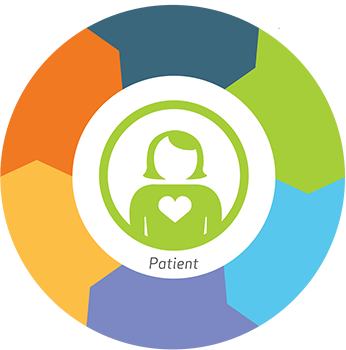What Patients Want: A Blueprint for Patient-Centered Care

Patients are able to find a doctor to switch to much more easily with the advent of online reviews. Improving the patient experience is therefore of paramount importance. This means to stay successful, a practice should work to better understand what its patients want, and be aware of elements leading to dissatisfaction to keep patients from exploring another practice. It turns out the keys to patient retention include some simple considerations that leverage the right personnel, which can be acquired through accessing quality healthcare staffing agencies, and current technology, like electronic health record systems to put patients’ needs first.
What is Patient-Centered Care?
One foundational philosophy of meeting patients’ needs is patient-centered care. This concept can be traced back to the mid-20th century when the medical community began to acknowledge the importance of patient autonomy. By the 1970s there was a notable shift toward shared decision-making between doctors and patients as informed consent became a fundamental ethical and legal requirement, empowering patients to participate in decision-making processes.
The concept of patient-centered care as we know it today is a holistic approach to delivering improved outcomes that places the patient at the forefront of healthcare delivery, focusing on their individual needs, preferences, and values. This evolution marked a shift from a disease-centered approach to one that acknowledged patients’ holistic needs. It gained significant attention in the 1980s, when quality healthcare started to include consideration of patients’ psychological, emotional, and social dimensions alongside their physical health.

What Are the Benefits of Adopting a Patient-Centered Care Model?
Understanding and meeting the needs of the patients in a specific practice requires a focus on healthcare staffing to find the right personnel, and on systems that ease patients’ ability to receive relevant information and timely care. With this foundation in place, a healthcare organization can cultivate numerous desirable results and meet satisfaction requirements in each key element of care.
1. Trust Through Communication
Effective communication and the establishment of trust are central to patient-centered care. A 2022 study published in the Journal of Clinical Psychology in Medical Settings highlights the positive correlation between physician communication skills and patient satisfaction. Doctors who actively listen, demonstrate empathy, and provide clear explanations cultivate trusting relationships with their patients, leading to better health outcomes and increased satisfaction.
2. Patient Convenience and Practice Efficiency
The integration of technology has transformed doctor-patient relations in recent years and spiked during the height of the COVID pandemic. For instance, a study published in JAMA Internal Medicine demonstrated the effectiveness of telemedicine in addressing barriers to care, improving patient experiences, and increasing access to healthcare services. Digital health solutions, such as telemedicine, electronic health records (EHRs), and patient portals, enhance accessibility, convenience, and patient engagement.

3. Patient Empowerment Through Collaborative Decision-Making
Shared decision-making has gained prominence as a core component of patient-centered care. Doctors and patients work together to make informed decisions that align with patients’ preferences and values. Shared decision-making plays a strong role in empowering patients and leading to more personalized and effective treatment plans.
4. Health Promotion Through Prevention
Patient-centered care recognizes the importance of addressing patients’ overall well-being. Healthcare providers are increasingly focusing on preventive care, health promotion, and disease prevention. This shift toward a holistic approach involves engaging patients in discussions about healthy lifestyles, preventive screenings, and early interventions. The Centers for Disease Control and Prevention (CDC) emphasizes the role of preventive care in improving health outcomes and reducing healthcare costs.
How Can a Practice Know What Its Patients Want?
The healthcare industry uses several types of surveys to gauge how patients are feeling about various areas of their care. These include research on health risk assessments, gaps in care, medication adherence, and patient experience. Patient experience surveys are designed to create a crucial connection with patients and point out areas of improvement by giving them a chance to report back on the quality of the care they received. The Agency for Healthcare Research and Quality has a popular model for a patient satisfaction survey that explores four dimensions of satisfaction:
-
Communication
There was adequate time for medical professionals to listen carefully, show respect, and provide clear explanations.
-
Information
The staff reviewed medication use with patient and followed up with test results; the
physician knew important information about the patient’s medical history.
-
Timeliness
Patients received an appointment for urgent or non-urgent care when needed, and the
practice responded to a medical question the same day it was asked.
-
Staff
Administrative staff were courteous, helpful and respectful.
To sum up, the history of patient-centered care demonstrates the progression from a paternalistic model to one that embraces patient autonomy, collaboration, and individualized care. By adopting patient-centered care principles and incorporating these trends, healthcare providers can foster stronger doctor-patient relationships, enhance patient satisfaction, and improve health outcomes. Leveraging healthcare staffing agencies who can partner in finding personnel with experience in patient-centered care, and streamlining costs and care through use of current technology, are critical to maintaining satisfied patients. As healthcare systems continue to evolve, patient-centered care remains a cornerstone of effective healthcare delivery, ensuring that patients’ voices, needs, and values are at the forefront of medical decision-making and care provision.
